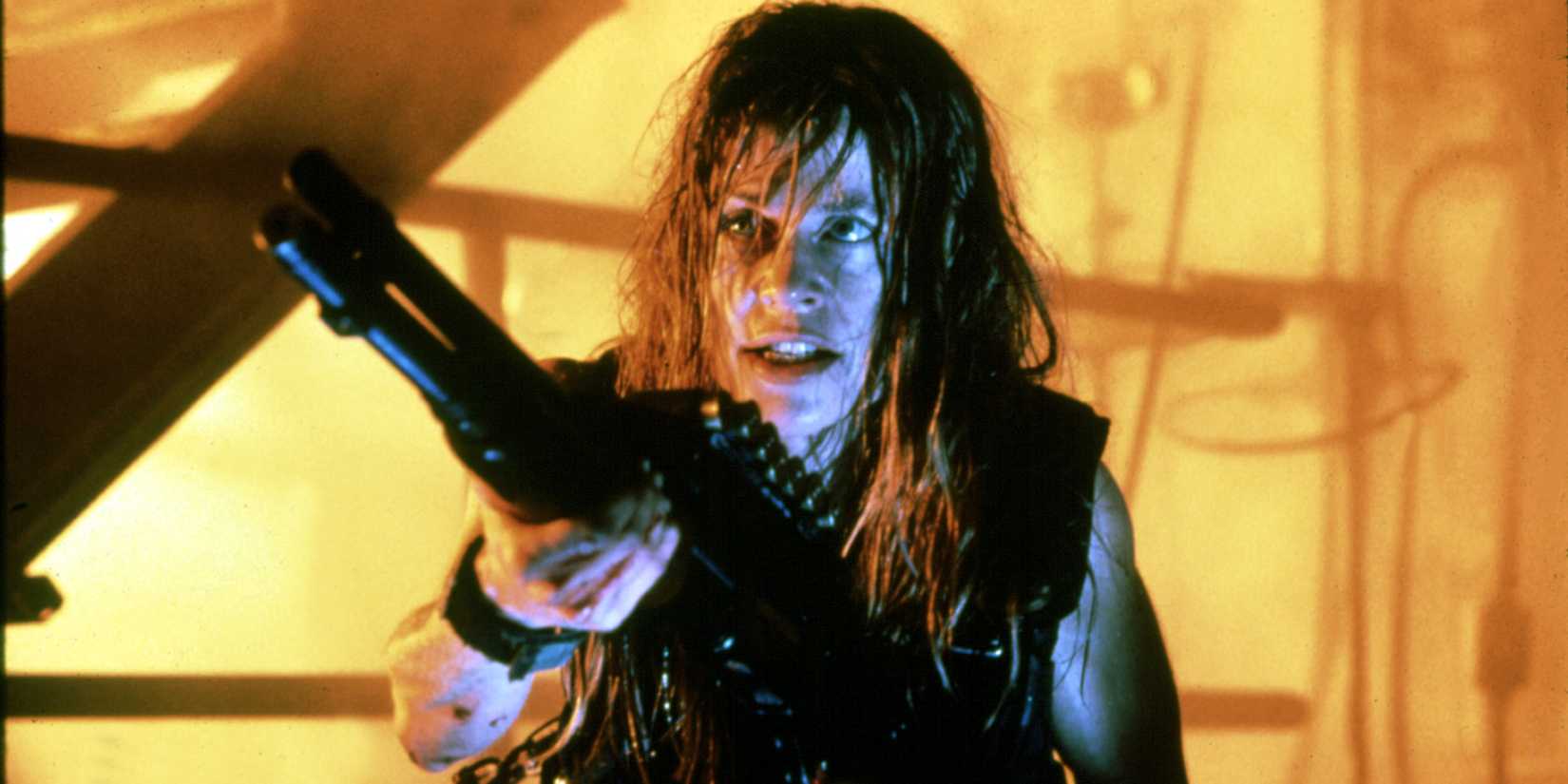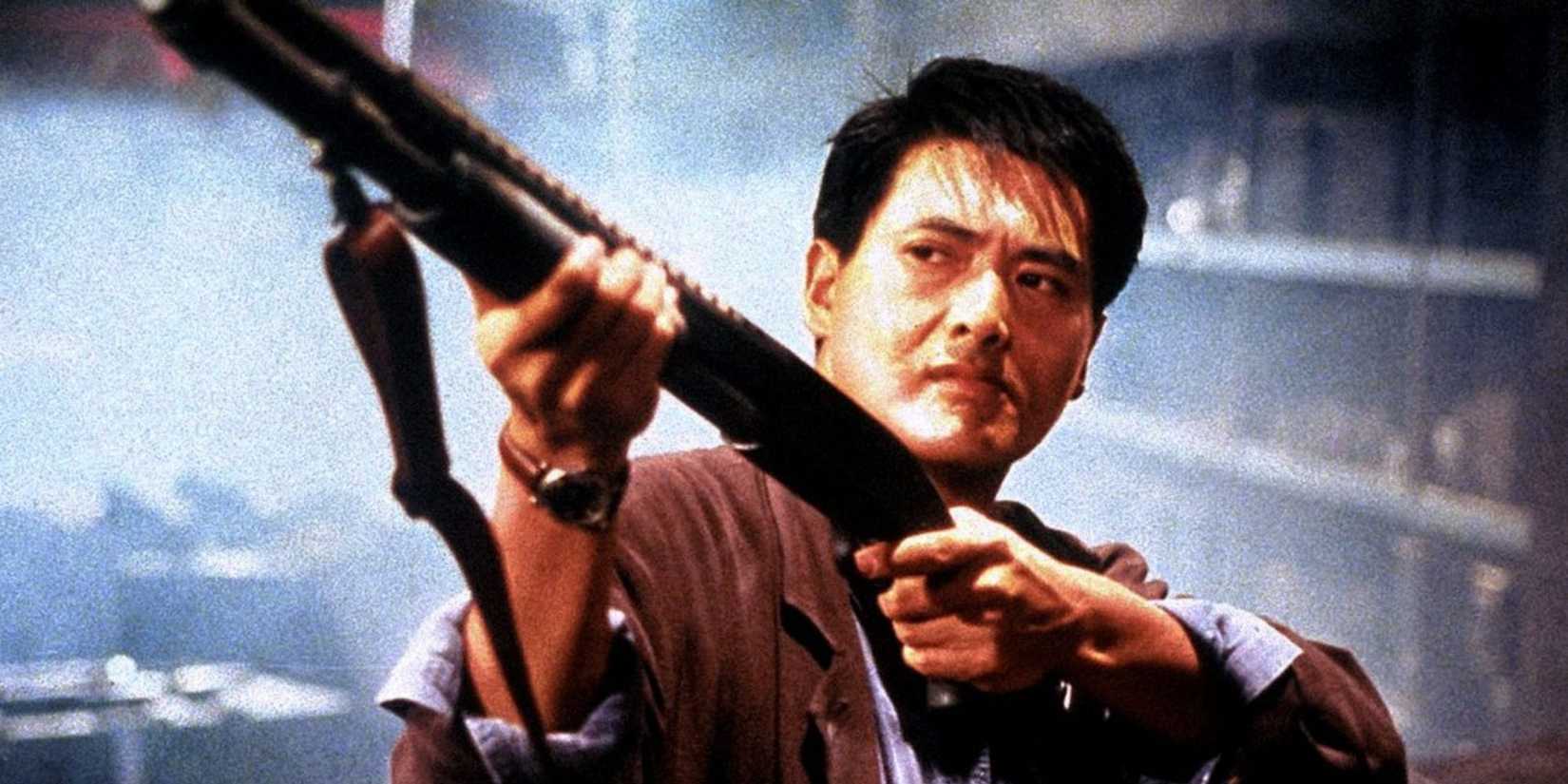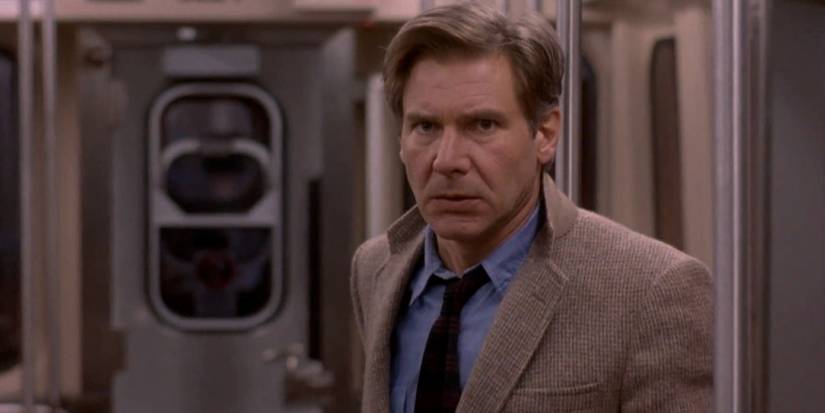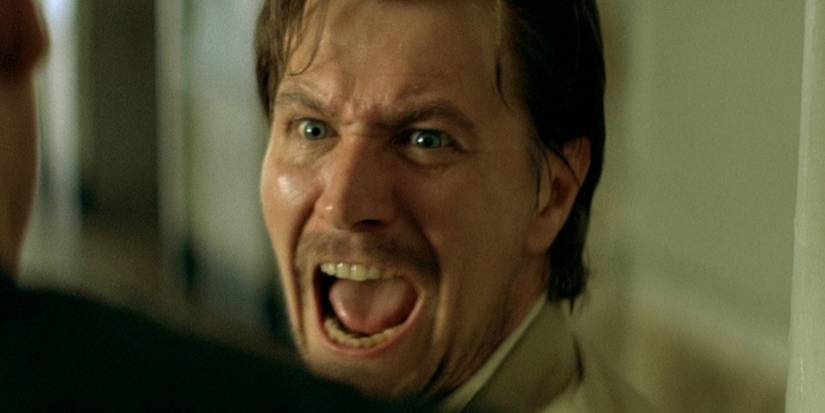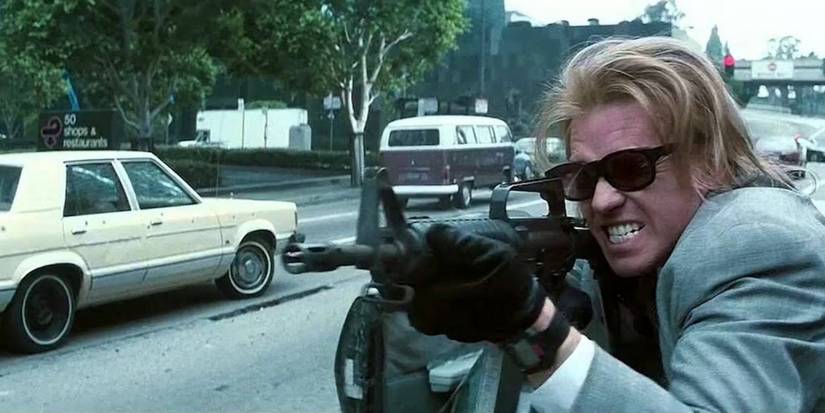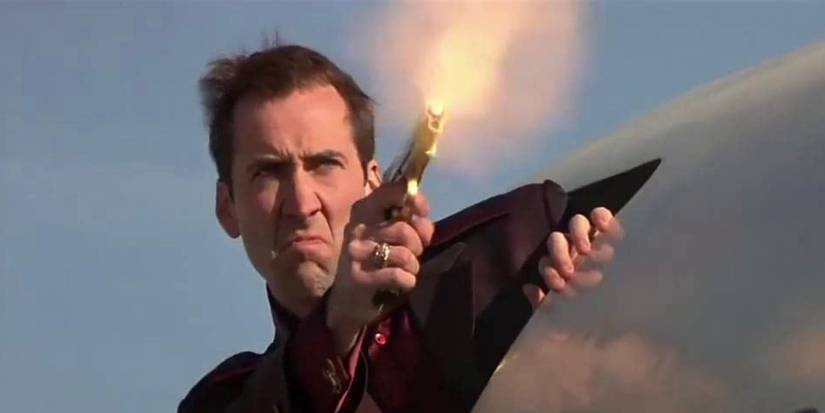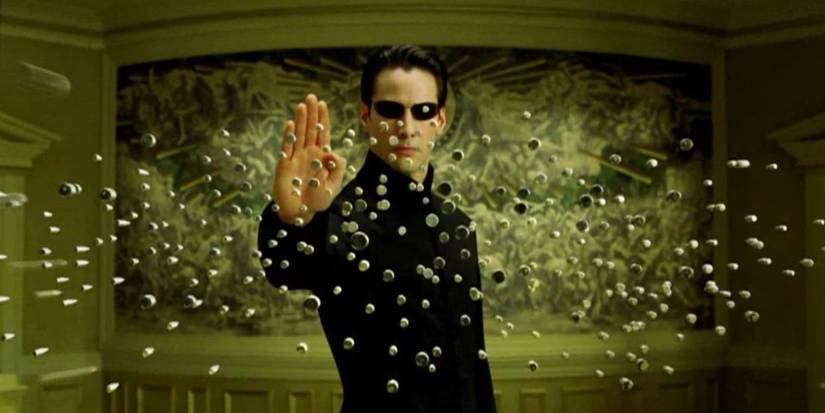
The 1990s witnessed a major transformation in action cinema, with the rise to prominence in Hollywood of stars like Jean-Claude Van Damme, Jackie Chan, Nicolas Cage, and Arnold Schwarzenegger, and the arrival of directors like John Woo and Michael Bay. Films weren’t as goofy as in the ’80s, but they were yet to become as grounded as in the 2000s.
Sensationalized violence, slow-motion, grand heroes, guns, explosions, over-the-top setpieces that just stayed on the reasonable side of ridiculous, and believable, but extravagant use of martial arts define the careers of the best action stars from the 1990s. The best action-comedies of the 1990s are also not as silly as 1980s action-comedy films, and their humor is more situational than observational.
The rise of gritty action movies in the 1990s and certain events in the early 2000s would eventually lead to more brutal and grounded action filmmaking, but for those who enjoy a mix of sensationalism and seriousness, the ’90s are undoubtedly the best decade of action films. Each year of the 1990s had great action movies coming out in it.
1990 – La Femme Nikita
Luc Besson continually proves to be a frustrating director because of the gender dynamics and the annoying lack of focus on female characters, even when they’re protagonists in his movies. However, despite the underwhelming trajectory of her story, the titular Nikita in his 1990 movie has become a cult icon over the years, owing to her unbelievably well-choreographed action scenes.
Even as you’re screaming at the screen for Nikita to make the more logical choice for herself in La Femme Nikita, you can’t help but be awed by her commanding screen presence. She’s an influential action hero who embodies the ’90s aesthetic, through stunts and fashion, and the scenes where she’s just executing missions as a political assassin are perfect.
1991 – Terminator 2: Judgment Day
Action movie sequels are rarely better than the original, but James Cameron’s Terminator 2: Judgment Day is a marked improvement on the original, as it expands on the lore, develops the concept of Terminators having human emotions and concerns, and introduces Edward Furlong’s young John Connor, one of the best ’90s movie protagonists, who helps the Terminator discover his humanity.
Moreover, Linda Hamilton as Sarah Conner is a trailblazing icon who, alongside Sigourney Weaver’s Ellen Ripley, changed action cinema forever by challenging the gender norms that drove the division of roles in Hollywood movies. She’s stunning, both as an actress delivering a poignant performance and as an action star holding her own in the set pieces alongside and opposite Schwarzenegger.
1992 – Hard Boiled
The ’90s and action cinema in general wouldn’t be the same without John Woo’s contribution to the genre. While his influence on Hollywood was more direct when he was a director working in the USA, his Hong Kong productions have left just as big a mark on Hollywood’s action cinema, because they introduced the American audience to his unmistakable style.
A cop decides to avenge his partner after the latter is shot and killed by members of a gun smuggling ring, and he joins forces with an undercover cop posing as a hitman for the same gang. Excessive force used to mean something different before Hard Boiled, which showcases sensationalized extreme violence, buoyed by some great action movie fight choreography.
1993 – The Fugitive
He didn’t kill his wife, but the Marshall doesn’t care. An iconic manhunt film that’s referenced in almost every cop show and many crime movies, The Fugitive is arguably Harrison Ford’s best non-franchise movie. Dr. Richard Kimble (Harrison Ford) is forced to become a fugitive from the law to clear his name after he’s wrongfully convicted of killing his wife.
“All right, listen up, ladies and gentlemen, our fugitive has been on the run for ninety minutes. Average foot speed over uneven ground, barring injuries, is 4 miles per hour. That gives us a radius of six miles. What I want from each and every one of you is a hard-target search of every gas station, residence, warehouse, farmhouse, henhouse, outhouse and doghouse in that area. Checkpoints go up at fifteen miles. Your fugitive’s name is Dr. Richard Kimble. Go get him.” – Deputy Marshall Samuel Gerard
The above speech has left an indelible cultural footprint on crime cinema, and Kimble is perhaps Ford’s most famous character outside his movie franchises, even more than the fictitious US President James Marshall from Air Force One. The Fugitive‘s action scenes are uniquely grounded in the knowledge that Kimble isn’t an action hero, and his stunts are executed with desperation.
1994 – Léon: The Professional
12-year-old Natalie Portman debuted as an actress in Luc Besson’s Léon: The Professional, where she plays the unconventional apprentice to Jean Reno’s titular protagonist, who is a seasoned hitman. Though the film is a revered action classic that has been remade and referenced many times in the last three decades, it has a murkier legacy today and has been reassessed.
The relationship between Léon and Mathilda (Portman) looks shady by today’s standards and the actress herself has commented on the similarity to the taboo age-gap storyline in Lolita. However, the film’s action sequences and bookending set pieces are incredibly stylish, Portman’s performance is top-notch, and the best part is Gary Oldman’s chaotic and measuredly over-the-top performance as the eccentric villain.
1995 – Heat
The best action movie turning 30 in 2025 is one of the greatest action flicks in cinematic history. Michael Mann’s film is so iconic that it’s been the golden standard for action cinema for the last 30 years. It has a carefully crafted balance between action and emotion. It foregrounds an emotionally rich narrative of obsession without compromising its action.
The scene from heat where Val Kilmer reloads a gun is so efficient and realistic that the Marine Corps uses it as a reference to train new recruits.
Despite mostly featuring slow, meditative scenes of characters staring into the distance and ruminating on their roles in the world and the nature of their professions, Heat feels less like a meandering think piece and more like a deliberately paced march towards a fantastic climactic set piece that would eventually become the quintessential definitive action sequence of the entire decade.
1996 – The Rock
A year after debuting as a director with the action-comedy Bad Boys, Michael Bay made a movie that tried to be the new Die Hard and came close. Sean Connery, similar to his most famous role, plays a British agent, and Nicolas Cage plays an FBI chemist, who is the John McClane in The Rock, aka Die Hard in Alcatraz.
The characters have to stop a vengeful general who threatens to start biological warfare by attacking San Francisco if his demands aren’t met. While Bay’s signature over-the-top action choreography graces the set pieces, the director dedicates time to characterization and plot development, making a high-tension rewatchable action classic instead of the usual overwhelming, incoherent mess he’s often associated with today.
1997 – Face/Off
I still don’t fully understand the nuances of the Nouveau Shamanic style of acting that Nicolas Cage developed and is known to use for his performances, but Face/Off is proof that it works. Starring opposite an equally angsty John Travolta, Cage delivers one of his most memorable performances, although it often seems caricaturish due to his commitment to the bit.
Face/Off is set in a world where facial transplant surgery is a reality, and this would eventually snowball into the dramatic mask set pieces in Mission: Impossible II. The action is stylish in John Woo’s hands, but between the slow motion and the one-liners, it’s difficult to remember who’s Travolta and who’s Cage as the plot twists never stop coming.
1998 – Run Lola Run
As if running down a ticking clock isn’t an exciting enough premise, Run Lola Run also gets philosophical about inevitability. The titular Lola has 20 minutes to collect a large sum of money and meet her boyfriend, or he’ll be forced to rob a bank, but depending on minor choices made during her run, the outcome can vary vastly.
The high-octane premise and the tight 80-minute runtime keep you glued to your seat until the very end. Run Lola Run‘s exploration of how even seemingly inconsequential choices have profound effects on our lives makes it a fantastic, thought-provoking movie as well. The action is dizzying, thrilling, and brisk, and nerve-wracking, but the cerebral aspect keeps up with it.
1999 – The Matrix
The Wachowskis changed cinema with The Matrix, which might be the most influential movie of the ’90s. It has shaped fan culture through the message boards, costume parties, and forums filled with conspiracy theories that it inspired around Y2K. Its themes, costume designs, and visual grammar also make it one of the greatest Gothic movies of all time.
The fantastic use of CGI shaped action cinema because the polished look, the perfectly executed slow-motion, and the slick aesthetic of the film continue to inspire directors today. The scenes where Neo glides between bullets or stops the bullets are still aspirational artifacts of the genre, even though CGI technology has advanced so much in the past 25 years.
Source link


